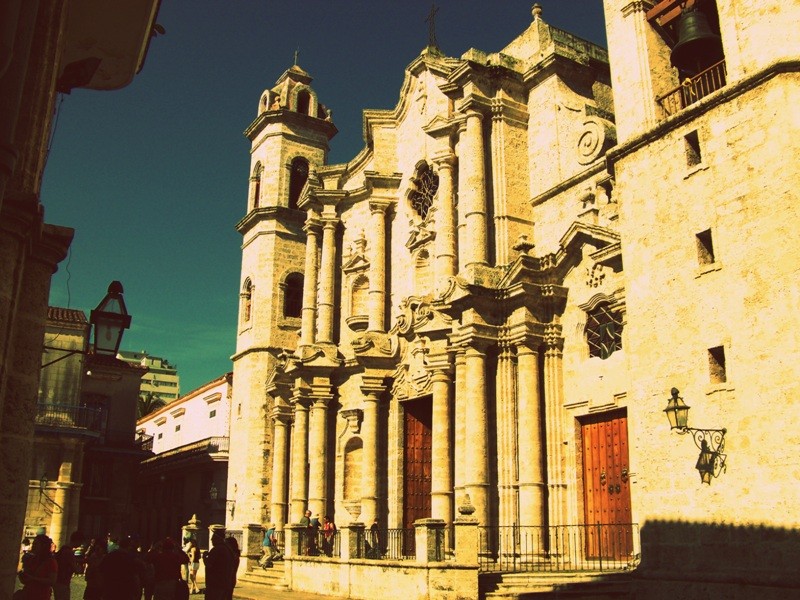Havana Cathedral and its Square

Photo Feature by Ernesto Gonzalez Diaz
HAVANA TIMES – This Cathedral’s full name is La Santísima y Metropolitana Iglesia Catedral de La Habana, dedicated to the Immaculate Conception of the Virgin Mary. It is a Baroque cathedral, which according to historiographical records, was inaugurated in 1777 in the true style of squares and churches being built in Spanish towns and cities at that time.
According to Wikipedia, “The Baroque cathedral is considered to be of the Tuscan variant, because of its two lateral bell towers, its rectangular 34x36m temple, which has three naves and eight lateral chapels, divided by thick pillars. The floor is made of black and white marble. Italian Bianchini was responsible for the sculptures and goldsmith work at the altars as well as the main altar, which were made in Rome in 1820 under the direction of famous Spanish sculptor Antonio Sola. Behind this altar, you can see three original frescos by Italian painter Perovani. Paintings inside the cathedral were painted by French painter Jean-Batiste Vermay.
“Between its different chapels, you can find the chapel dedicated to Our Lady of Loreto, which was consecrated by Bishop Morell de Santa Cruz, in 1755, before the old Jesuit parish church was transformed into a cathedral, and it has an independent entrance. Its intense orange-colored dome which is lower that its side towers, can be seen from nearby buildings.
The cathedral holds many relics and sanctuaries. Inside, you can find the tombs of many of the city’s and country’s renowned citizens.
It is surrounded by the square that shares its name, which holds the mansions of Havana’s colonial nobility, including the Palacio Marques de Arcos, the house belonging to the Counts of Casa Bayona, dating back to 1720, which is now the Musuem of Colonial Art and the mansion belonging to the Marquis de Aguas Claras.“
In the following pictures, you can see its beautiful facade, its square where tourists, Havana residents and people dressed in old-style clothes trying to sell souvenirs all congregate, beggars and tourists in its entrance, the light of its stained glass windows reflecting off a confessional, San Cristobal’s altars, the altar of Our Lady of El Cobre (the patron saint of Cuba and every Cuban), and the beauty and solemnity inside this sacred place.
(Click on an image to display the gallery.)





